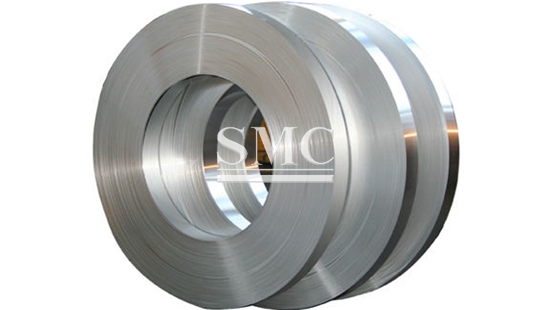The stainless steel material is based on iron, but it has better performance than ordinary steel and iron. The addition of alloying elements allows stainless steel materials to have corrosion resistance at normal temperatures and even high temperatures, as well as physical properties due to general materials.
First, the material characteristics analysis
1. Strong toughness
It is well known that the presence of stainless steel material collective iron leads to high hardness of the material. Especially under high temperature conditions, the high hardness and high strength of the material make it difficult to achieve precise cutting during processing, and it is more difficult to achieve bending and curling. Processing effects.
2. Plasticity
In the processing of stainless steel, it exhibits a large plasticity, so that the surface of the chip-attached material generated during the processing is not easily removed. That is to say, as the processing progresses, the plasticity exhibited causes the material to have a certain adhesion ability, resulting in processing difficulties.
3. High expansion coefficient
In the processing of stainless steel materials, as the processing work deepens, the material temperature also increases. At the same time, the poor heat dissipation capability also causes the processed material to be easily deformed, affecting accuracy. In addition, the high temperature of the material also keeps the temperature of the processing tool high and accelerates its wear.
Second, the processing tool
The choice of machining tool is a crucial step in the machining process. Poor quality tools will inevitably cause a series of problems in the machining process and will also affect the quality of the final product. On the contrary, high quality tools can improve the machining efficiency. However, due to different requirements for stainless steel processing, it will cause waste of resources.
1. material selection
The above problems can be seen that for the characteristics of stainless steel materials, the selection of processing tools needs to have good thermal conductivity, wear resistance and strong toughness for their properties. For example, the high strength and toughness of high speed steel tools can reduce the wear and tear of the machining process, and at the same time, it is not easy to be affected by the change characteristics at higher temperatures, which meets the basic requirements for the selection of stainless steel machining tools.
2. Preferences
The geometric parameters of the tool are also critical for tool machining. Proper setting of tool parameters can make the machining results more accurate. The forefoot parameters of the tool are generally between 10 and 20, which are accurately divided according to the precision of the lathe; the parameters of the rear foot are determined according to the thickness of the processed material, and the angle of the foot is small after the thickness is large, and vice versa; the main declination and the declination are according to the The characteristics of the material to be processed and the processing requirements are specifically set. The effect of the blade inclination angle is to enhance the strength of the tool tip, which makes the machining process smoother. The parameter value is generally between 7 and 3. All other parameters need to be flexibly adjusted according to processing requirements and processing procedures to achieve the best processing results. It should be pointed out that if the rake face is ground to a position slightly lower than the shank, the chip problem can be better handled while improving the degree of tool application.
3. Other requirements for tools
First of all, in order to overcome the problem of adhesion of stainless steel materials, the rough value of the tool is not too large, which is beneficial to eliminate the cutting chips in time and reduce the occurrence of sticking problems. Secondly, the cutting edge should be kept sharp at all times, which can effectively reduce the hardness. The larger the amount of material to be eaten, the smoother the machining process; finally, the amount of cutting of the tool needs to be controlled.

Third, the processing method
1. Cutting speed control
In the processing of stainless steel materials, the mastery of cutting technology is a compulsory course for every production and processing personnel. Long experience has shown that low-speed cutting can adjust and improve the chipping problem that often occurs during processing, because in this state, the low speed causes the temperature of the process to be controlled within a reasonable range, which avoids Inaccurate processing of stainless steel and high damage to the tool caused by high temperature can also cause the plasticity of the material to not change greatly, thus avoiding the formation of built-up edge; on the contrary, if the cutting temperature is high in the state of high-speed chip cutting If it is too high, it will cause softening, so it will be easy to have built-up edge on its surface during the subsequent processing, which will affect the quality of finished products.
2. drilling
In the production workshop, we found that the most commonly used drill bits are generally twist drills, but twist drills need to pay attention to the determination of the helix angle when processing stainless steel materials. The drill bit should not be too small, otherwise it will affect the processing speed. At the same time, the drilling process with low sharpness is easy to cause machining deviation, so that the finished product does not meet the previous regulations. However, it should also be noted that if the helix angle of the drill bit is too large, the waste generated during the machining process cannot be eliminated, which causes obstacles in processing. Therefore, it is necessary to pay attention to the selection of the helix angle during processing, and adopt the intermittent feed mode while selecting a large angle to eliminate the waste in time.
3. Cutting fluid and cooling method
Due to the influence of a series of special characteristics of stainless steel materials, the process of rinsing, lubricating and cooling by selecting appropriate cut blood can make the tool play the most important role and be minimally affected during the processing. The processed materials can also guarantee the quality and quality. The processing is smooth. Generally, the cut blood selected in the cutting process includes an emulsion, a mineral liquid, and a sulfurized liquid.
Generally, under the action of high cutting temperature, the metal strength and hardness of the chip cutting part will decrease significantly with the increase of cutting temperature, which makes the cutting process go smoothly. It is also because the strength and hardness of stainless steel are not significantly reduced at high temperatures, and the cutting force during the cutting process is concentrated in the vicinity of the blade, which easily causes plastic deformation of the blade and damage.
1. Large cutting force
The stainless steel material has high strength, large tangential stress during cutting, and large plastic deformation, so the cutting force is large. In addition, the material has extremely poor thermal conductivity, which causes the cutting temperature to rise, and the high temperature tends to concentrate in a narrow area near the cutting edge of the tool, thereby accelerating the wear of the tool.
The large cutting strength is mainly due to the inconsistent strength of stainless steel types of different materials, so the corresponding force during cutting is relatively large and not easy to plastic. When selecting a process such as a drill collar, a process with a greater strength than the processed material is selected as much as possible, which is less likely to cause deformation of the stainless steel and also reduces the cutting strength during the cutting process.
2. High cutting temperature
The stainless steel material itself is not conducive to heat conduction in terms of thermal conductivity. During the cutting process, the machining process and the workpiece want to touch, resulting in high processing temperature, which also aggravates the wear of the tool. We can solve the heat treatment method of “solution treatment and water toughness treatment”, and finely adjust the metallographic structure of the processed material without changing the state of the original material in the physical state, thereby improving the temperature during processing.
3. Serious work hardening
Austenitic stainless steels and some high-alloy stainless steels are austenitic structures. The work hardening tendency is large when cutting, usually several times that of ordinary carbon steel. The cutting of the tool in the work hardening zone shortens the tool life.
4. Easy sticking knife
Both austenitic stainless steel and martensitic stainless steel have the characteristics of strong chipping and high cutting temperature during processing. When the strong chips flow through the rake face, the sticking phenomenon such as bonding and welding will occur, which affects the surface roughness of the machined parts.
When processing several materials of stainless steel, there will be a certain viscosity between the machining process and the workpiece due to the toughness of the cutting, that is, the sticking knife, so that the finished parts are poorly processed, the surface is easy to wear, and the sticking knife is on the tool. The damage is also very large.
5. Tool wear is accelerated
The above materials generally contain high melting point elements, large plasticity, high cutting temperature, which accelerates tool wear, frequent sharpening and tool change, thereby affecting production efficiency and increasing tool use cost.
Guest contributors are welcome at the Alloy Wiki.It is a weekly wiki and guide on alloy information and processing technology, while also about the vast array of opportunities that are present in manufacturing. Our team of writers consists of a Machining Material Supplier / Machinist / Tool and Die Maker, a Biomedical Engineer / Product Development Engineer, a Job Development Coordinator / Adjunct Professor, and a President and CEO of a manufacturing facility.
Link to this article:Are You Aware Of The Difficulties In Processing Stainless Steel Materials?
Reprint Statement: If there are no special instructions, all articles on this site are original. Please indicate the source for reprinting:Alloy Wiki,thanks!^^


